The raccoon is an example of an animal species that has had great success adapting to humans. Well known for their exasperating habit of raiding trash cans (and not bothering to clean up afterward), the raccoon is one of the most common animals found in residential areas. It is also one of the smartest—it has been reported that raccoons have operated water taps in order to get a drink! Raccoons squatting on your property can be a formidable nuisance, but fortunately, we have them pretty well figured out, and a little knowledge goes a long way when it comes to evicting these masked mammals.
Where Do Raccoons Live in Metro Houston?
Raccoons prefer brushy or wooded areas near streams, lakes or swamps, although they can live close to developed areas if sufficient food, water and cover are provided. Though they prefer woodlands, raccoons can live practically anywhere and have adapted well to human habitats.
Raccoons are excellent climbers and can gain access to different parts of your home. You’ll typically find evidence of a raccoon living in your Woodlands home in the attic, in your chimney, and on your roof.
Below are some examples of raccoon problems in Woodlands, TX.
Raccoon in Attic Removal Woodlands
This Woodlands homeowner became aware of an animal in the attic after hearing sounds in the night. At first, they thought it might be a rat. However, after a thorough investigation by a Critter Control specialist, it turned out to be a bigger animal than expected. To confirm it was a raccoon, technicians applied a footprint tracking powder on the ductwork. The raccoon footprints corroborated suspicions, providing the wildlife specialist everything they needed to know.
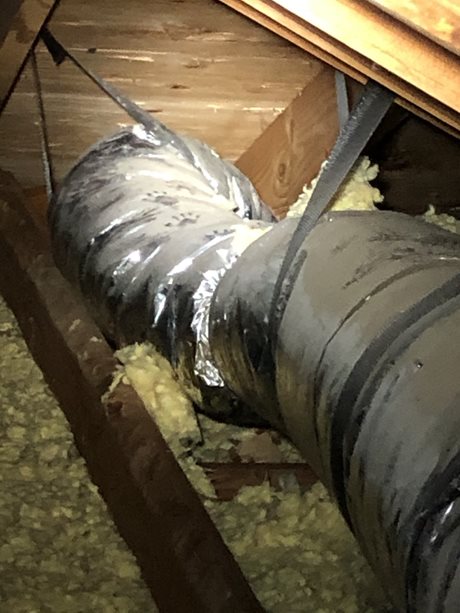
Unfortunately, footprints are the best case scenario when it comes to raccoon damage in the attic. In this case, raccoons were attempting to penetrate the ductwork inside this homeowners attic.
Why do raccoons damage ductwork? For one, raccoons are gathering materials for the den. Additionally, raccoons in the attic may attempt to create new paths through the house. In other scenarios, it may be a simple case of curiosity, especially for young kits.
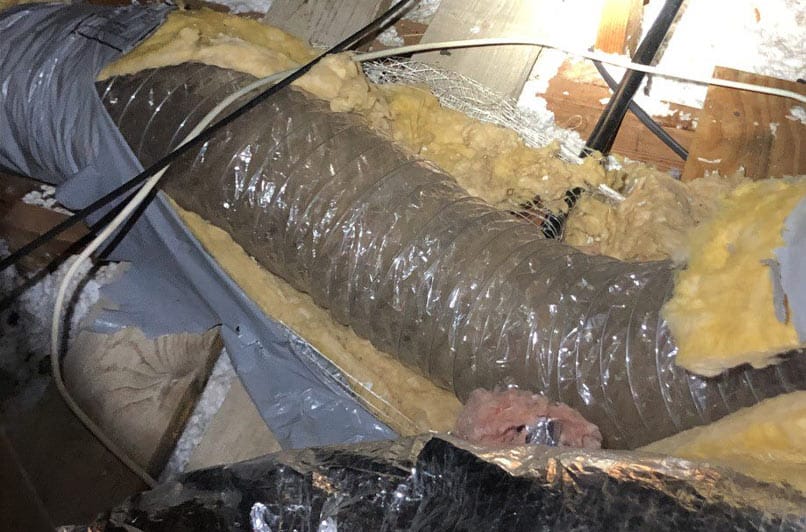
Aside from the financial cost of repairing ductwork, raccoon waste inside ductwork can pose various health risks. Beyond the unpleasant smell of raccoon waste, which wafts through the home via the air conditioning system, raccoon feces are vectors for diseases. One example is the raccoon roundworm, an infection caused by accidental ingestion or inhalation of roundworm eggs found within raccoon feces.
Thus, if you have suspicions of raccoons or any other animal in the attic, call a wildlife professional.
How Do Raccoons Get into the Attic?
Raccoons are fairly industrious when it comes to finding a way into an attic. When possible, raccoons will exploit an existing hole. Despite the fairly large size of raccoons, the hole doesn’t have to be big.
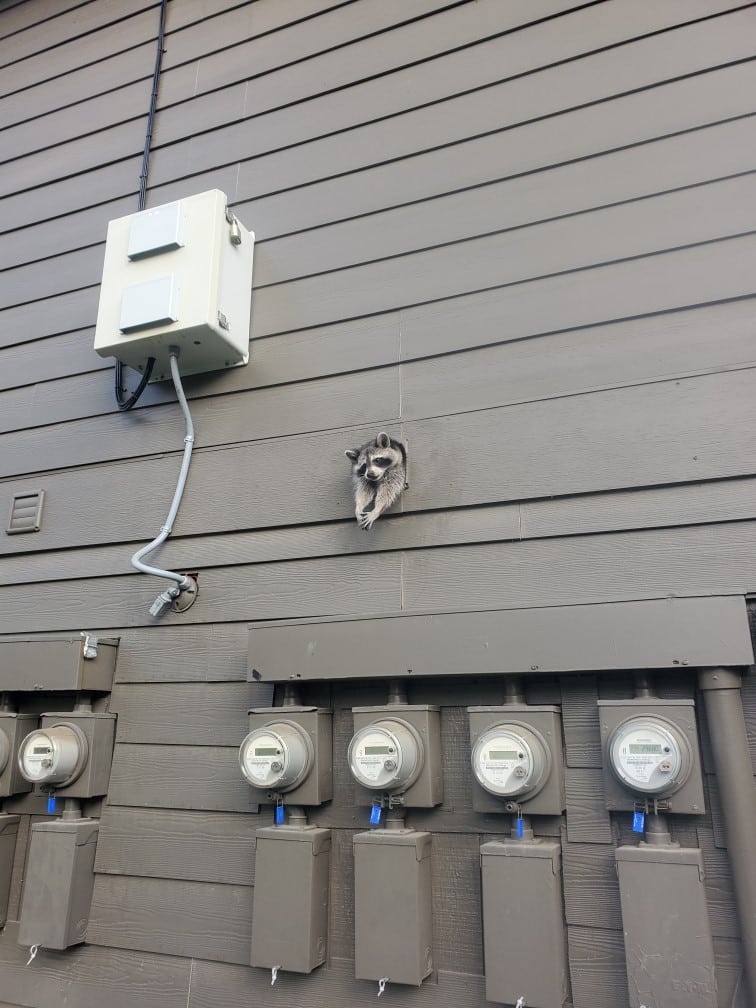
An adult raccoon can fit into a hole the size of a softball (3-4”).
In the worst-case scenario, a raccoon will create or expand holes, tear off roof shingles, or destroy vents. Raccoons are powerful creatures for their size, and they have tough paws and sharp claws to help bypass obstacles that other animals would have trouble with. Here are a few examples that Critter Control technicians have encountered in the field.
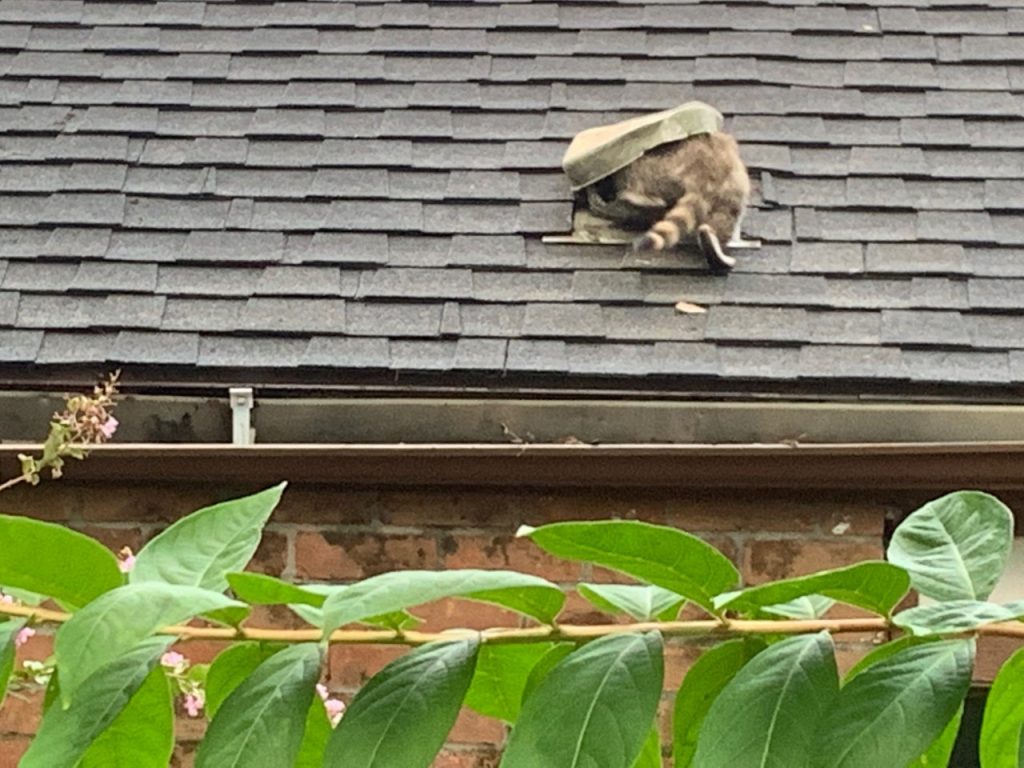
Raccoon in Chimney
This homeowner heard scuffling sounds coming from their chimney, and soon discovered a raccoon had moved in. It is common for female raccoons to search for a den in chimneys and attics to give birth. Unfortunately, once they have nested in a chimney, hiring a professional is often the only effective and safe solution for getting rid of a raccoon for good.
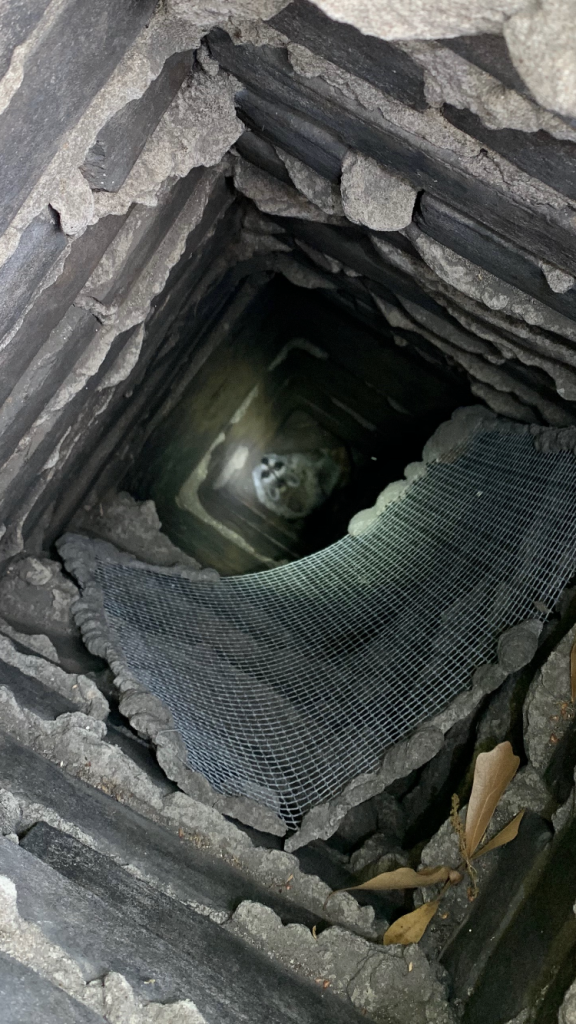
Raccoon control was attempted on this chimney. The raccoon had no trouble breaking through the installed metal screen. In the quest to get rid of raccoons for good, it is imperative that raccoon proof materials and techniques are applied.
In this case, the Critter Control wildlife technician employed an effective and humane trap which captured the raccoon on its nightly departure from the chimney. Next, they then inspected the chimney for kits (babies). After ensuring no kits were present, the technician installed a raccoon proof barrier.
Raccoon on Roof
Raccoons often access rooftops by climbing trees, siding, and drainage pipes. A raccoon latrine site (raccoon poop) is a sure sign of a raccoon problem. Raccoons on roofs can cause significant damage to your property.
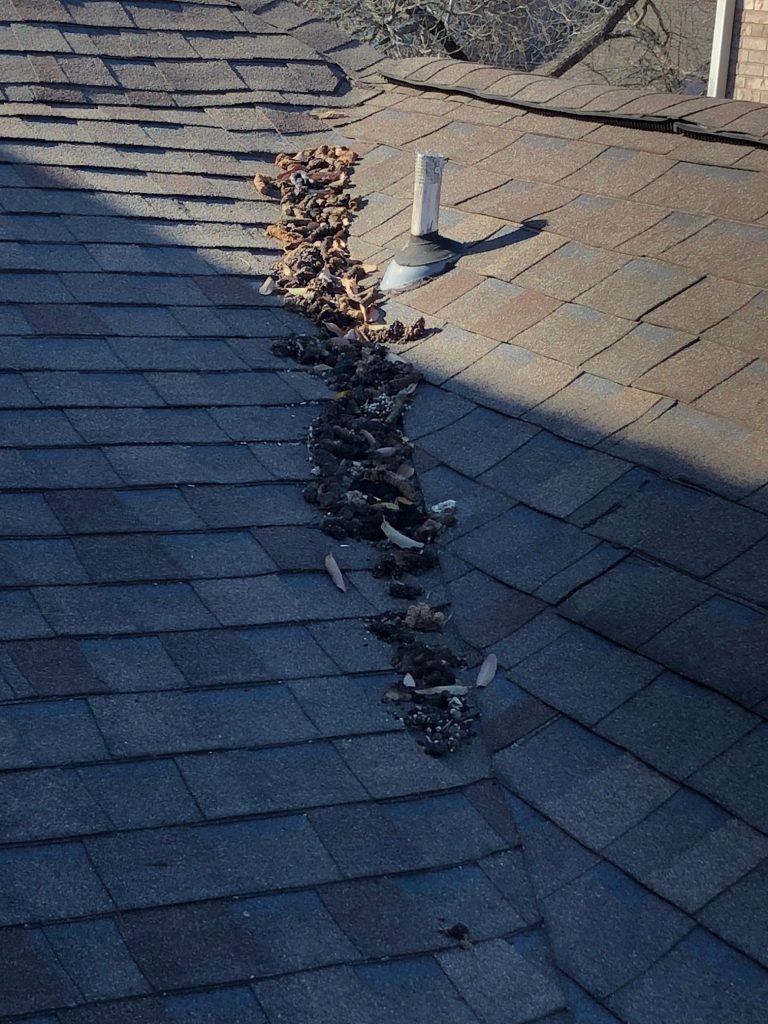
Females are known to destroy soffits, fascia boards, shingles, vents, and insulation to establish denning sites. Once a raccoon creates or enlarges a hole in the rooftop, it becomes an easy pathway to the attic.
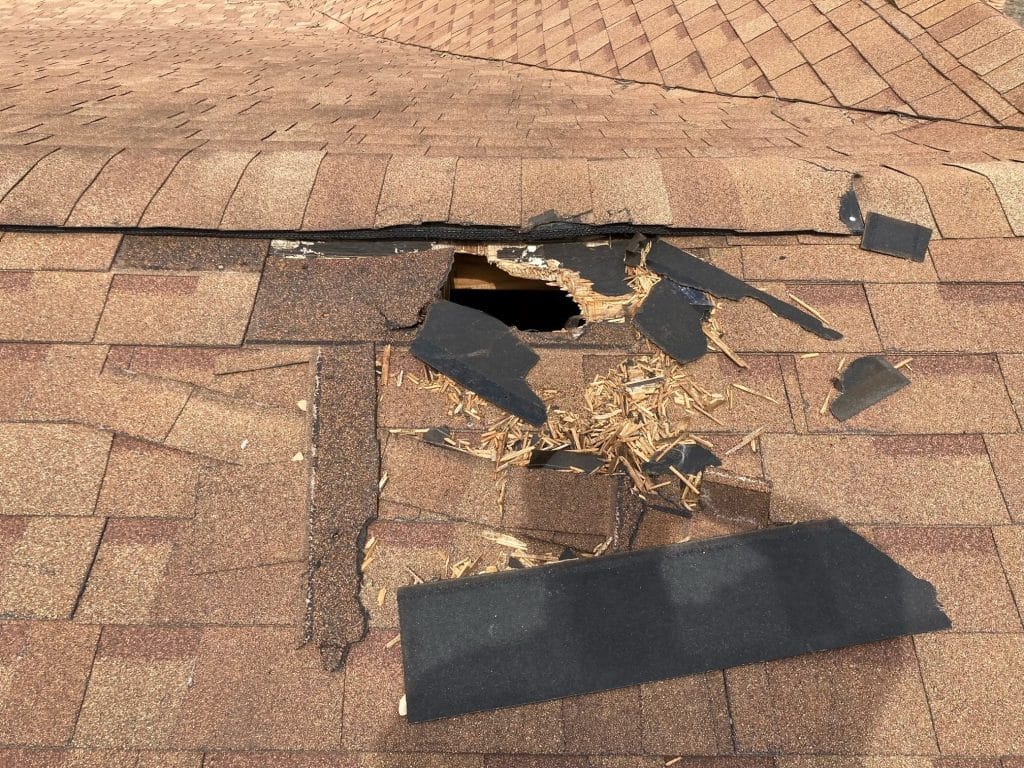
Call for Professional Raccoon Removal
While raccoons may look cute, they are fiercely aggressive and powerful. They carry a wide range of parasites, including roundworms, tapeworms, and ticks. You are most likely to spot raccoons during the summer when they breed. A female raccoon can have up to four kits or cubs at a time.
Inspection: We perform a complete inspection that includes looking for larger openings in walls and roofs and identifying raccoon droppings and footprints.
Trapping & Removal: We can isolate and trap raccoons using hefty traps that are simple, humane, and effective.
Repairs: Raccoons can cause extensive damage to the inside of a building. Therefore, we seal up holes, disinfect the area, and replace any damaged insulation or materials.